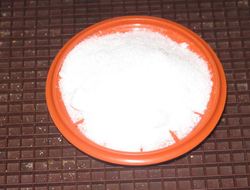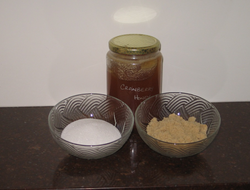Sugar: Natural and refined
Published: November 17, 2017
The word "sugar" is commonly used to describe refined table sugar, but may also be used to describe naturally occurring carbohydrates, such as glucose, fructose and sucrose.
This varied use of the word "sugar" may be confusing when it comes to determining the "healthiness" of foods which contain sugar.
Refined table sugar is obtained predominantly from sugar beet or sugar cane which is used for sweetening food and beverages.
Refined sugar is also available in other forms such as brown sugar, castor (berry) sugar and icing sugar.
Sweeteners such as honey, molasses, maple syrup, and high fructose corn syrup are also used for sweetening food products and can be considered "added" sugars.
Refined sugars are devoid of vitamins, minerals and fibre and often the foods they are added to do not make up for these deficiencies.
Thus the term "empty calories" is often give to foods and beverages with a high sugar content.
While small amounts of added sugar can be accommodated in a healthy diet, when consumed in large quantities sugar may contribute to nutrient deficiencies, disease, overweight and obesity, and tooth decay.
The amount of added sugar can easily add up especially if you have several cups of tea or coffee every day which you sweeten with sugar.
Processed foods are another source of added sugar and nutrition information on packages doesn't always identify the exact amount of added sugar. Many unpackaged foods, such as in-store bakery products, do not provide nutrition information.
Nutritional health recommendations do not suggest avoiding the consumption of whole grains, fruits, vegetables and milk products.
The natural sugars found in whole foods are associated with other nutrients required for good health such as vitamins, minerals, fibre, fat, and proteins which are essential for good nutrition.
Although nutrition labels on foods are not perfect, they can be used to identify natural and added sugar, but you need to check the ingredient list as well as the nutrition fact panel.
For example, plain yogurt should not contain added sugar. The nutrition fact panel will identify sugar, but the ingredient list may only identify milk products.
The sugar in plain yogurt is lactose: the natural sugar that is a component of milk.
However, yogurts which contain fruit often contain added sugar as well as fruit. The amount of sugar that is identified on the nutrition fact panel combines lactose, the natural sugars in the fruit and added sugar.
If there is no added sugar (sugar or honey etc.) in the yogurt the ingredient list will only identify milk products and fruit: both sources of natural sugar.
If sugar has been added then the ingredient list will contain sugar, sucrose, or fructose, or identify the added sugars. If the product contains sugar it is not possible to determine how much from the nutrition fact label.
To manage sugar consumption it is best to focus on consuming adequate amounts of fruits, vegetables, grains, and milk products and minimising processed foods and beverages containing added sugar.
In addition, reducing the amount of sugar that you add to your cereal, tea, coffee, and home baking can contribute to lowering your sugar intake.
Learning about which processed foods and beverages contain significant amounts of added sugar is helpful in managing overall sugar consumption.
References
1.
Whitney, E. & Rady Rolfes, S. (2005). Understanding Nutrition. Belmont, CA: Thomson Wadsworth


